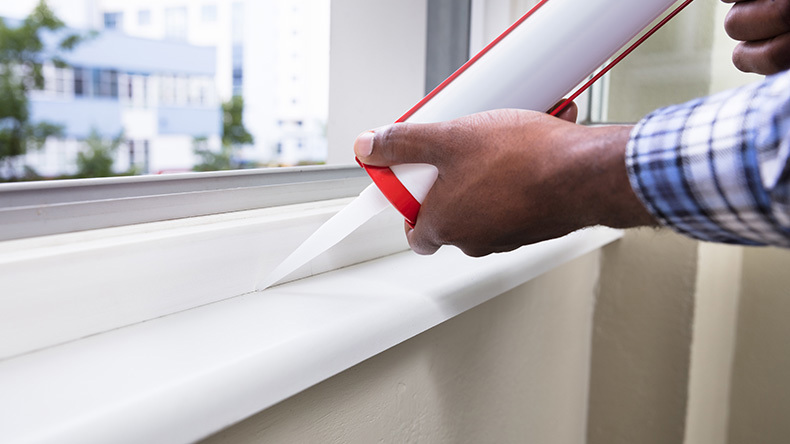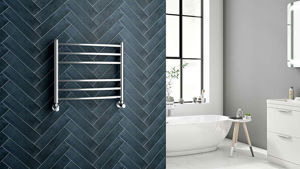Getting out of a cosy, warm bed and stepping into a frosty bathroom every morning is no fun - especially with temperatures dropping. Trouble is, your bathroom can often be the hardest place in the house to keep warm given the constant need for ventilation and the drastic changes in temperature and humidity as you use the bath or shower.
And it's not just comfort that's dwindling with a cold bathroom, it is also costing a fortune in heating bills as we drastically try to heat a room that will never get warm. Plus, unfortunately, the colder the bathroom, the more likely you are to have mould spores forming due to excess moisture and poor ventilation and this can have a negative impact on health and wellbeing.
That’s why it's really important to insulate your bathroom properly to ensure it stays warm enough to use comfortably this winter.
There are effectively two main strategies to keeping your bathroom warm over the winter:
- Investing in efficient insulation
- Increasing the amount of heat there is in the bathroom
Improving Insulation Within the Bathroom
If heat is allowed to escape because of poor insulation, even an efficient heating system won't help to keep your bathroom warm and cosy in winter and mould at bay. Luckily, we can all make some easy improvements to the insulation in our bathrooms, which is one of the most effective ways to retain heat and keep it warm throughout winter.
1. Replace silicone sealant on the window edges
Over time, the sealant around window edges can begin to deteriorate, leaving gaps for cold air to enter the bathroom or for heat to be lost. Resealing window edges with silicone sealant is not only simple but can do wonders in helping your bathroom to insulate heat. A tube of sealant will cost less than a fiver from either Amazon or your local DIY supplier and is really easy to apply. Once dry it will provide months and months of protection.

2. Install weather stripping on window or door edges
Weather stripping is a more heavy duty alternative to simple silicone caulking and can be found at the majority of DIY goods suppliers in the form of a long, coil of plastic and rubber sealant stripping that can be cut down to the necessary size to fit any window or door. The process of sealing window edges is very similar to caulking and is often more efficient at keeping both cold air and water from seeping through the gaps around your windows.
3. Installing proper ventilation
A lot of people will often ventilate their bathroom by opening windows. Whilst this is a quick and efficient method of doing so, heat can be lost incredibly quickly and can often be both difficult and slow to reheat during the winter months. Installing an extractor fan in your bathroom can prevent the need for opening a window and help retain heat as well as assisting in removing any bad smells from your bathroom.
4. Window insulation film
Window insulation film is a thin plastic film that can be applied to any window which effectively reduces the amount of heat lost through typical convection. The film can either be directly applied to a window using a hairdryer to shrink the film around the glass or can be attached to the window ledge to create a still air layer around half an inch thick using pressure sensitive tape. This restricts the convective air flow onto the inside glass surface, much like adding an extra layer of glazing but with the benefit of a much smaller cost. Window insulation film can also help limit or prevent condensation, reducing the risk of mould and mildew build up.
Adding More Heat Into the Bathroom
If you've made steps to improve insulation in your bathroom then the next best thing to add more warmth is, of course, more heat. But when deciding on additional or updated sources of heat in a bathroom by means of a radiator, heated towel rail or underfloor heating then it’s important to understand the BTU requirements of your bathroom which is based on size, type of glazing on the windows and exposure. This will help you to find a radiator that is the right size to heat the space sufficiently.
1. Installing a more efficient radiator or towel rail
The largest source of heat within any bathroom is usually the bathroom radiator. Yet, it’s a common issue that bathroom radiators are either too small to heat the room properly or, if they're quite old, can have a low heat output. It might be the case that you need to install a larger and more energy-efficient radiator or heated towel rail in your bathroom. You’ll find that this will help to heat the room up a lot quicker and save on energy bills in the long term.
2. Bleeding a bathroom radiator
Sometimes the simplest solutions are often the best. A lot of the time, you'll need to bleed your radiators to ensure they're working as efficiently as possible. If your radiator is either taking a long time to heat up, not staying as warm as it should be or is only heating up at certain sections of the radiator, there’s a good chance that it needs bleeding. This is a simple operation and often only needs the bleed valve to be turned slightly using a radiator bleeding key. Turn the key slightly until you can hear air passing through the valve and close again when water starts to pass through.
3. Water saving shower heads
During the winter, a lot of us will take longer showers to keep warm or to just delay the inevitability that is getting out of the shower. If this is the case, it might be best to install water saving shower head. These shower heads restrict the flow of water through the head by anything up to 50% of typical usage, allowing you to take a guilt-free longer shower whilst using a much smaller amount of water in the process. Some now also draw in air and mix it with the water to create heavier water droplets that feel as if their is a larger amount of water passing through the shower head.
4. Install underfloor heating
Whilst the cost of installing underfloor heating can look quite steep in the short term, the long term savings can be high, making it a solid bathroom investment. The process of installation involves using heated cabling or heated mats underneath your bathroom floor to gently warm the bathroom. A lot of the time, these can be controlled using a switch or timed thermostat to make sure you have a toasty bathroom floor before you step foot in the bathroom.
For more bathroom inspiration, take a look at our cosy bathroom ideas to achieve the perfect aesthetic. Plus, read our fabulous tips to avoid mistakes on DIY house renovations.






